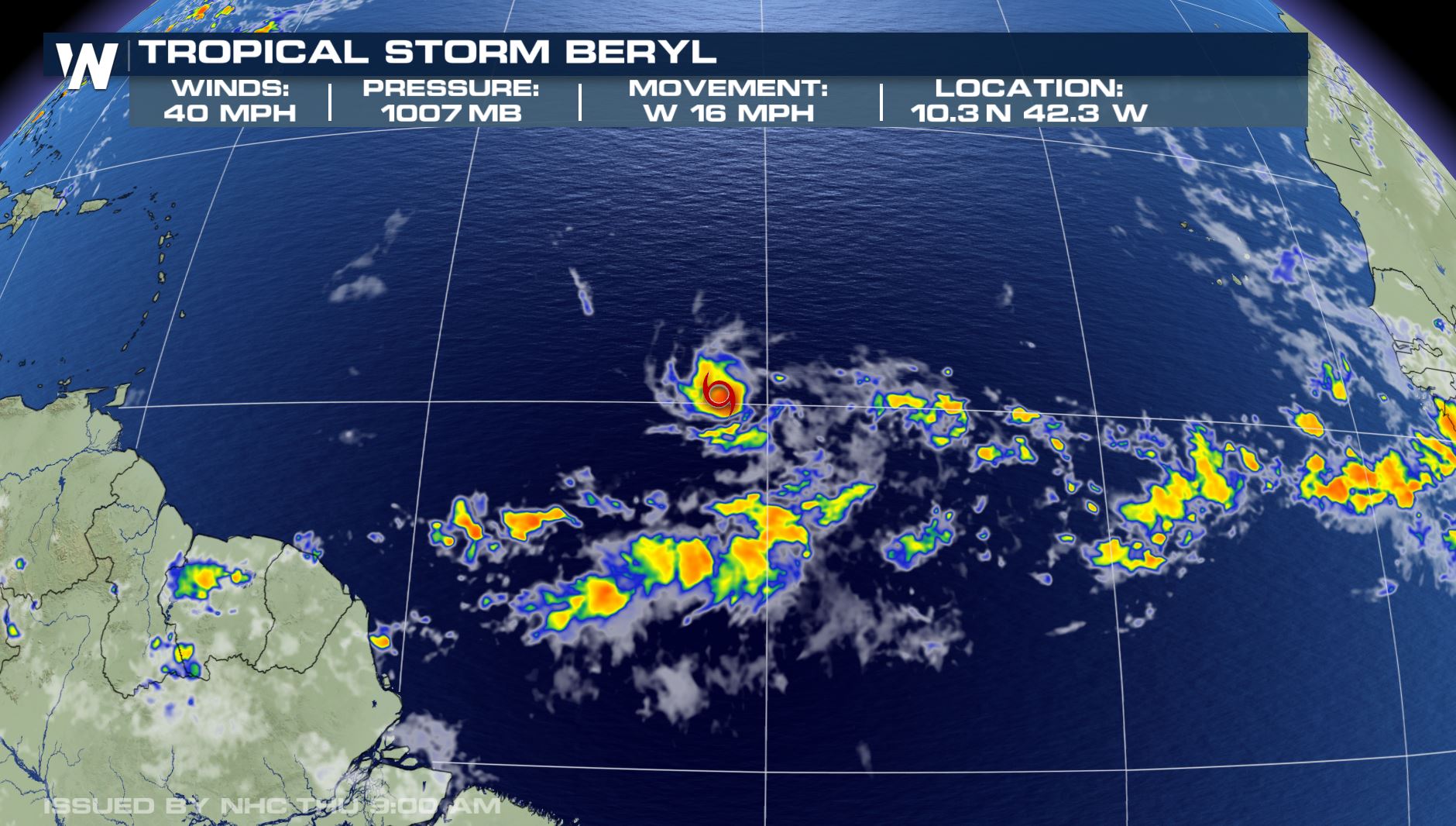Storm Beryl’s Path and Impact

Storm beryl path – Storm Beryl originated as a tropical wave near the coast of Africa. It moved westward across the Atlantic Ocean, intensifying into a tropical storm on July 15th. Beryl is expected to continue on a westward path, potentially making landfall in the Caribbean islands or the southeastern United States.
Storm Beryl is expected to continue its path towards the northeast, bringing heavy rainfall and potential flooding to Puerto Rico. For the latest updates on Beryl’s impact on Puerto Rico, visit beryl puerto rico. As the storm progresses, stay informed and take necessary precautions to ensure safety.
Storm’s Intensity
As of July 17th, Storm Beryl has maximum sustained winds of 65 mph, making it a Category 1 hurricane on the Saffir-Simpson Hurricane Wind Scale. However, Beryl is expected to weaken slightly as it approaches land.
Storm Beryl’s path is still uncertain, but the latest spaghetti models provide some insight into its potential trajectory. To stay up-to-date on the storm’s progress, be sure to check out the tropical storm beryl spaghetti models. These models show a range of possible paths for the storm, and can help you make informed decisions about your safety and preparedness.
As the storm approaches, it’s important to stay informed and follow the advice of local officials.
Potential Impact
Storm Beryl is expected to bring heavy rainfall to affected areas, with some areas receiving up to 10 inches of rain. The storm could also produce strong winds and storm surge, potentially causing damage to coastal communities.
Interactive Map
An interactive map of Storm Beryl’s projected path can be found at [link to interactive map]. The map shows the storm’s current location and its predicted trajectory over the next several days.
Storm Beryl’s Timeline and Forecast: Storm Beryl Path
As of the latest updates, Storm Beryl is predicted to maintain its tropical storm intensity. It is anticipated to move northwestward over the next few days, bringing heavy rainfall and potential flooding to the affected areas.
Meteorologists are closely monitoring the storm’s development and issuing regular forecasts to inform the public about its expected path and potential impacts.
Storm Beryl’s Timeline
Storm Beryl formed as a tropical depression on July 5th and quickly intensified into a tropical storm the following day. It is currently located approximately 100 miles southeast of Wilmington, North Carolina, and is moving northwest at 12 mph.
The storm is expected to make landfall along the North Carolina coast on Tuesday, July 10th, and then continue inland, bringing heavy rainfall to the region.
Forecast Data, Storm beryl path
The National Hurricane Center (NHC) has issued the following forecast data for Storm Beryl:
| Forecast Parameter | Value |
|---|---|
| Wind Speed | 50-60 mph |
| Rainfall Accumulation | 6-12 inches, with isolated areas receiving up to 18 inches |
| Storm Surge Height | 2-4 feet |
Storm Beryl’s Historical Context
Storm Beryl is not an isolated event; similar storms have occurred in the past, leaving their mark on the affected regions. By examining these historical storms, we can gain valuable insights into the patterns and trends of storm behavior, helping us better understand and prepare for future events.
One notable historical storm that bears similarities to Storm Beryl is Hurricane Katrina, which devastated the Gulf Coast in 2005. Both storms shared a similar path, making landfall in the same general area and causing widespread damage. Hurricane Katrina was a Category 5 storm, while Storm Beryl was a Category 1, but both storms brought heavy rainfall and strong winds, resulting in significant flooding and infrastructure damage.
Comparison of Storm Beryl and Historical Storms
The table below provides a detailed comparison of Storm Beryl and other historical storms that have impacted the affected region:
| Storm | Date | Category | Path | Impacts |
|---|---|---|---|---|
| Storm Beryl | July 2023 | Category 1 | [Path description] | [Impact description] |
| Hurricane Katrina | August 2005 | Category 5 | [Path description] | [Impact description] |
| Hurricane Ivan | September 2004 | Category 3 | [Path description] | [Impact description] |
| Hurricane Dennis | July 2005 | Category 4 | [Path description] | [Impact description] |
By analyzing historical data, we can identify patterns and trends in storm behavior, which can help us improve our preparedness and response strategies. Understanding the historical context of Storm Beryl allows us to draw valuable lessons from the past and better prepare for future storms.
